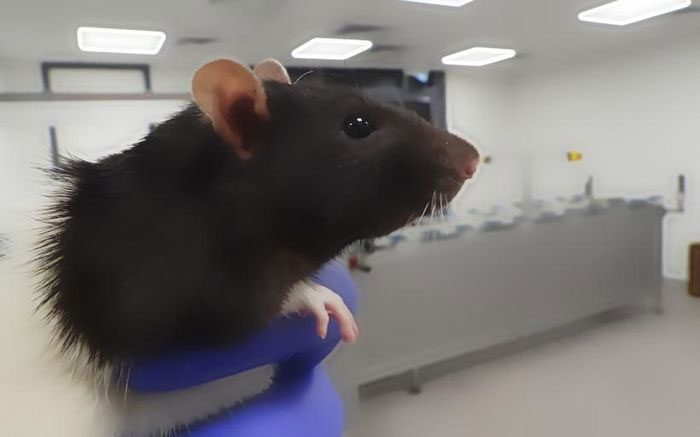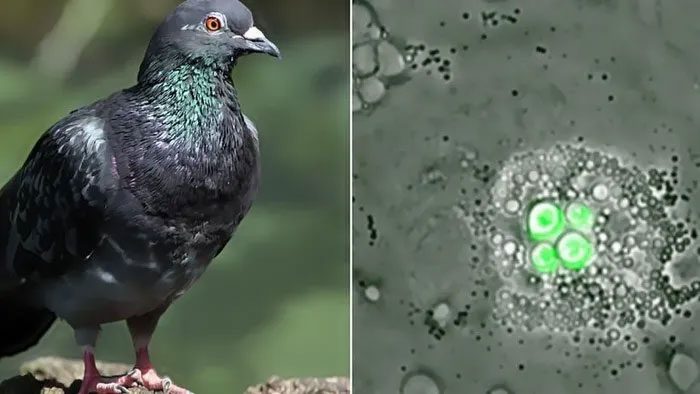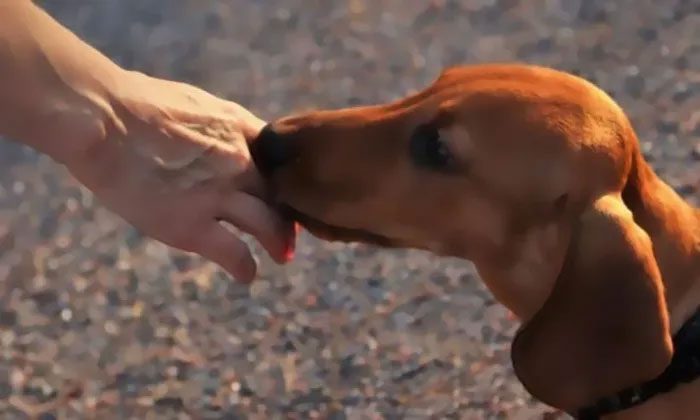Some animal species are renowned for their keen senses, allowing them to detect many things in the environment that humans cannot perceive.
Top 9 Animals That Can Detect Illness in Humans
Some animal species are well-known for their sharp senses, enabling them to detect various elements in the environment that humans may not sense. Leveraging this ability, scientists have utilized them to help diagnose serious illnesses early on. From dogs and cats to mice and insects, they are significantly aiding the field of medicine.
Mice

Trained mice can detect toluene, a liquid that emits a smell indicating the presence of lung cancer.
In 2021, researchers in South Korea published a paper showing that trained mice could detect toluene, a liquid that emits a smell signifying the presence of lung cancer.
In the experiment, mice were exposed to toluene among a series of other scents and were then given real human breath samples in plastic bags, some of which were mixed with toluene. In over a thousand trials, the mice detected the substance with an accuracy of 82%.
Bees
Bees are believed to possess a sense of smell so strong that they can recognize even a few molecules of a substance in a room. Taking advantage of this ability, scientists have used them to help early detection of diseases such as tuberculosis and diabetes.
Their antennae help bees accurately detect specific scents within a mixture of smells emitted simultaneously, such as human breath. Susana Soares, a Portuguese product designer, developed an elegant glass device called “Bee’s” that allows people to safely breathe into a chamber containing bees. After detecting and responding to certain chemicals, they are rewarded with sugar.
Pigeons

Pigeons can aid in developing cancer detection methods based on imaging.
In a rather special experiment—if not to say extremely strange—researchers in the United States tested whether pigeons could detect breast cancer from images. Interestingly, they could do it just like humans!
Despite their small size, the pigeon’s brain is quite robust. When trained, they can distinguish between microscopic images of cancerous and non-cancerous tissues.
When shown images they have never seen before, they can apply what they have learned and accurately differentiate between images that have been enlarged, reduced, or altered in color. It is believed that in the near future, pigeons could help develop imaging-based cancer detection methods.
Ants
Similar to bees, ants possess very sensitive antennae, allowing them to detect substances that humans cannot perceive. According to scientists, specific chemicals secreted by cancer tumors have a distinct smell.
However, breath is not the only bodily excretion containing these chemicals; they also appear in urine. In 2023, researchers discovered that a species of ant can accurately sense cancer compounds in mouse urine.
But how do ants react to the presence of these chemicals? In training, when they detect the requested substance, they are rewarded with sugar water. Later, when researchers stop providing sugar water, the ants will linger longer near urine samples containing cancerous compounds because they are anticipating a reward.
Dogs

Dogs are trained to detect diseases in breath, plasma, urine…
With a sense of smell believed to be 10,000 to 100,000 times better than ours, it is no surprise that dogs can also help humans identify cancer.
They are trained to detect diseases in breath, plasma, urine, and saliva. In studies, they were provided with around 300 different scent samples before being introduced to the smells of carcinogenic substances. The results were promising as they accurately distinguished between different smells with ease.
Fruit Flies
Fruit flies have fewer odor receptors than bees, but why are researchers using them for disease detection? This is because they react and express themselves more clearly than bees. Scientists have sought to genetically modify flies to emit light as soon as they detect the presence of specific chemicals.
In this study, air infused with the smell of breast cancer cells and healthy breath was blown towards the flies. Researchers then observed under a microscope the flashing fluorescent spots on the flies’ antennae when they detected the odor. The results were very encouraging, providing hope for an early cancer detection solution at an extremely low cost.
Worms
Besides soil, it seems roundworms are also interested in cancer cells, especially when they are hungry. In an experiment, South Korean scientists placed about 50 worms on a microscope slide, along with healthy human cells and cancer cells. The results showed that about 70% of the worms slithered toward the cancer cells.
While it is unknown why cancer cells attract worms, scientists have a hypothesis: cancer cells emit many molecules that smell like rotten apples, which attract worms. Further research is ongoing to see if they can detect cancer upon contact with substances like urine or breath, rather than direct exposure to cancer cells.
Grasshoppers
Grasshoppers possess a strong sense of smell, so they are also being studied for disease detection. However, scientists have not trained grasshoppers to recognize cancer cells; instead, they attached electrodes to their brains to observe how they react to gases emitted by cancerous and healthy cells. The results showed that grasshoppers could do much more; they can distinguish between three types of cancer.
Cats
Although not as keen as a dog’s nose, a cat’s nose can differentiate smells better than both dogs and humans. Anecdotes tell of a woman in Franklin, Tennessee, USA, who visited the doctor after a mysterious bruise appeared on her chest, where her cat had continuously pounced. As a result, she was diagnosed with breast cancer.
Earlier, a notable story emerged in Canada where a man from Calgary confirmed that his cat had warned him of lung cancer by persistently scratching at his left chest. Thanks to this, he received early treatment and extended his lifespan.


















































